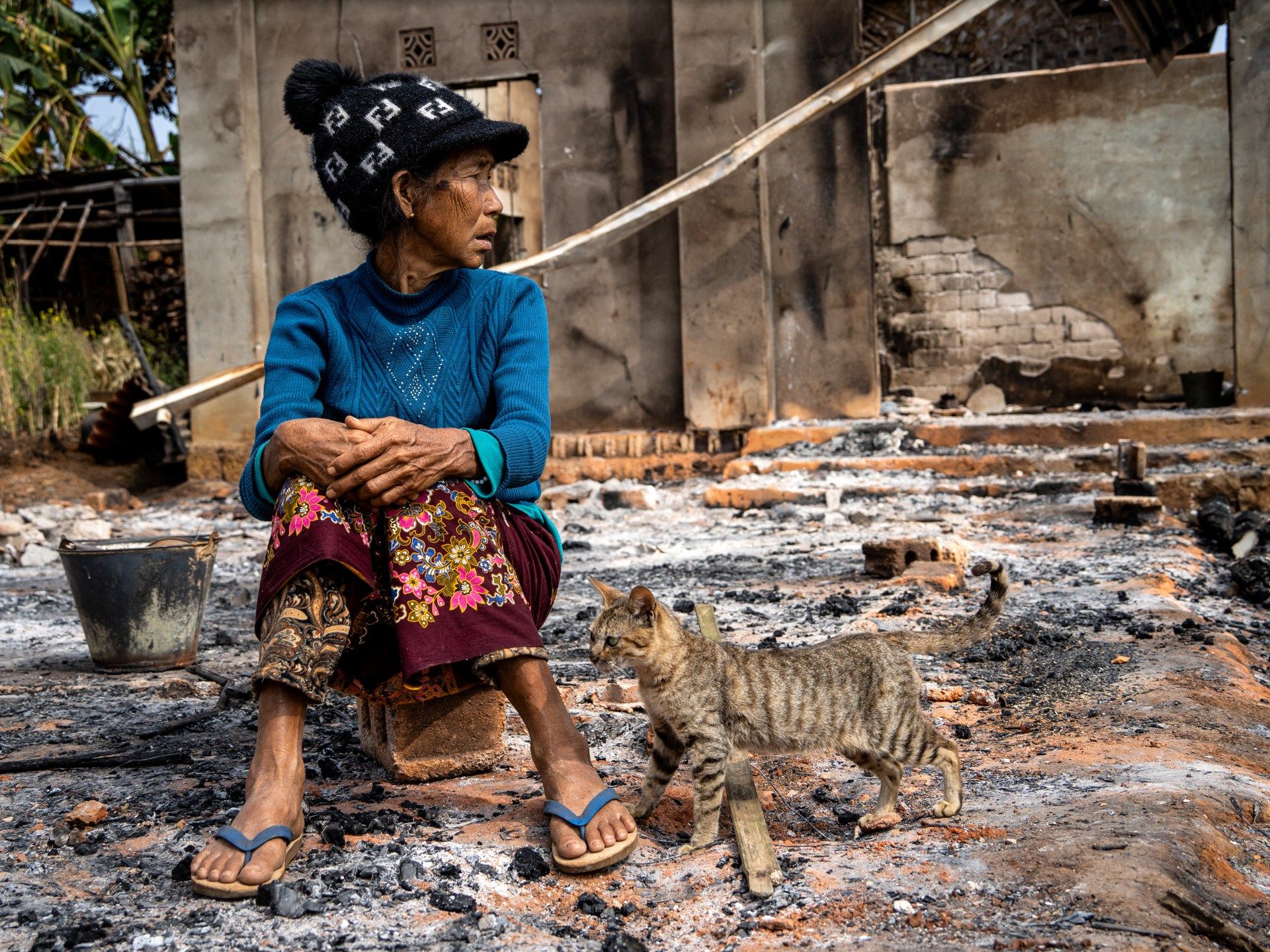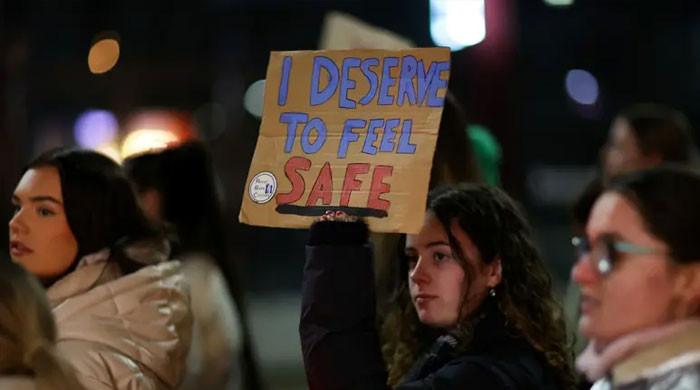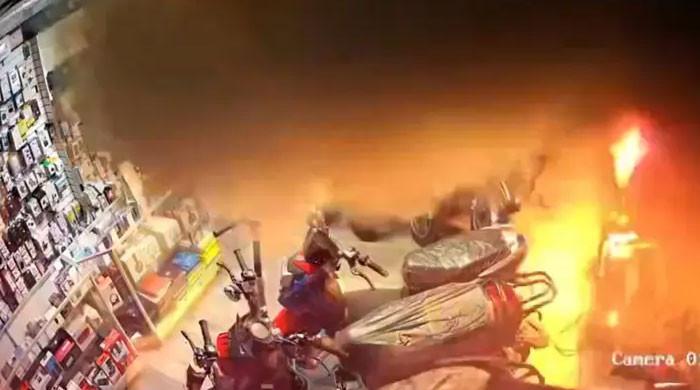Mae Sot, Thailand – Once again, the attack came from the sky.
Kachin resistance fighters barely heard the sound of propellers as two Myanmar military drones dropped their payloads overhead in northern Kachin state in late April.
“I fell to the ground when the bombs fell,” Aung Nge, a fighter with the Kachin People’s Defence Force (KPD), told Al Jazeera from an undisclosed location. “I didn’t lose consciousness. I was awake the whole time.”
The drone strike seriously wounded three men who were hiding near the front line in Kachin state, where fighting with the military has intensified since October last year.
In critical condition, field medics sent the men to a hospital hidden deep in the jungle where they could be treated by professional doctors.
However, the day after receiving treatment, one of the soldiers began to show symptoms that doctors could not understand and his condition began to deteriorate rapidly.
Another Kachin Independence Army (KIA) man, who had been injured in another drone attack days after the first attack and appeared to be recovering with no signs of infection, also took a turn for the worse and died in his sleep.
Meanwhile, Aung Nge was on the verge of suffering horrible infections that would spread throughout her body.
Doctors told Al Jazeera that the men suffered rapid-onset necrosis, an effect not usually seen in a blast wound. Necrosis causes the deterioration of most or all of the cells in an organ or tissue due to disease or lack of blood supply.
Although necrosis can be caused by sepsis, which comes on quickly and is often accompanied by fever, doctors said they could find no physiological reason for their patients' rapid deterioration. Toxic substances can also trigger such reactions, they said.
“Upon closer examination of the wounds, it is evident that they are rapidly necrotising, decomposing easily and are not associated with metallic foreign bodies,” Dr Soe Min, the veteran traumatologist who treated the suspected cases, told Al Jazeera. He has been treating combat-related cases since January 2022 and has seen and treated hundreds of blast injuries.
These cases were different, he said.
“After two days, all the wounds turned black and were emitting a foul-smelling discharge. The entire left arm had a bluish color and the radial pulse was weak. So I had to proceed with the amputation of the middle part of the arm on the third day,” he said of Aung Nge, the fighter who survived.
Prohibited weapons
Under the Chemical Weapons Convention (CWC), which Myanmar ratified in 2015 during a previous quasi-civilian government, the production, stockpiling and use of chemical weapons is prohibited under international law. Chemical weapons include riot control substances such as tear gas that can irritate or disorient soldiers on the battlefield, as well as herbicides and toxins that act on the central nervous system.
Meanwhile, the Convention on Certain Conventional Weapons (CCW) seeks to limit or ban the use of weapons that could cause soldiers “unnecessary or unjustifiable suffering” or “affect civilians indiscriminately.” Myanmar is not among the 126 states that have ratified or acceded to the convention as of July 1 last year, according to the UN.
Myanmar's military, which seized power in a coup in February 2021, has previously been accused of using banned weapons: against the Kachin in 2014 and against the Karen, another armed ethnic group, in 2005. Neither case has been definitively proven.
The current regime, which calls itself the State Administration Council (SAC), has already been accused of war crimes, including indiscriminate airstrikes against civilians and the widespread burning of villages.

Now, fighters are reporting encounters with potentially harmful weapons. In March, the Pa-O National Liberation Army (PLNA), an ethnic armed group, reported that the army had dropped chemical weapons in Hsi Hseng in southern Shan State during clashes.
The following month, in Kawkareik township in eastern Karen State, another resistance group made similar allegations. The “Joker Column,” an armed faction there, claimed that 30 of its fighters experienced symptoms following an attack with what they described as “poison gas bombs.” One of the armed group’s members said his comrades were having difficulty breathing and were vomiting.
Human rights experts say allegations that banned and restricted weapons are being used should be investigated and verified by a credible and independent group.
“It would be a big deal if substantial evidence were discovered, but the evidentiary threshold is, and should be, quite high,” David Scott Mathieson, an independent analyst, told Al Jazeera. “Then it would have to go to the CCW committee and see what ramifications any breach of the treaty would entail. Probably [result] in requests for sanctions and possibly suspension as a signatory.”
The Independent Investigative Mechanism on Myanmar (IIMM), a United Nations agency that investigates serious crimes and abuses committed by the military and armed groups, has also been looking into the new allegations from the resistance. While they could not go into detail about their investigation, they told Al Jazeera that they were “aware of certain allegations of chemical weapons use in Myanmar and are investigating those allegations.”
Myanmar's military did not respond to Al Jazeera's repeated requests for comment on the allegations.
Meanwhile, the National Unity Government (NUG), the parallel government made up of politicians and lawmakers dismissed by the generals, said it was investigating the allegations.
“The army is very likely to use banned weapons to maintain its dominance,” Nay Phone Latt, spokesperson for the NUG Prime Minister’s Office, told Al Jazeera. “Therefore, the international community must closely monitor these developments and put pressure on the terrorist army.”
'We tried to escape'
In April, the Karen National Liberation Army (KNLA) temporarily liberated the key town of Myawaddy on the border with Thailand. In response, the SAC sent warplanes to counter the offensive. One resident, whose neighbourhood was partially destroyed by the airstrikes, told Al Jazeera that the subsequent shelling made him and seven other men sick.

Nay Min, 27, told Al Jazeera the attacks happened so fast that her family barely had time to pack their things before fleeing.
“We tried to escape, but that day the airstrikes fell at least 80 times near us,” he said. “The reconnaissance plane was over my house. And then the house next to mine was destroyed by an airstrike. And the SAC used the helicopter and started strafing the area.”
The sound of gunfire echoed outside their home. Eventually, the family of four with three young children ducked for cover and decided to flee. After escaping, Nay Min said he and seven other men briefly returned to their homes to collect some things before fleeing to Thailand.
Once they entered their neighborhood, they noticed white smoke floating in the air, which immediately caused their eyes to burn and made them feel disoriented.
“Suddenly, after crossing the Moei River into Thailand, three of the men became dizzy and then collapsed,” he said, stressing that it was surprising because the men were particularly well-built and strong.
“One of the three men who fell was foaming at the mouth. I don’t know what happened to them or whether they survived,” Nay Min said. She added that her eyes felt burning and watery constantly for three days afterwards.
'The more oxygen, the more it burns'
Many resistance groups across the country have alleged that the SAC is using incendiary weapons – munitions designed to set objects on fire or cause intense burns. They can also cause respiratory injuries to people due to their chemical reactions. Examples of such weapons include napalm, thermite or white phosphorus, which burn when exposed to air. Human rights groups say further investigation would be needed to establish that civilians were being deliberately targeted with such weapons to assess whether international law had been violated.
Phoe Thaike Maui, deputy commander of the Karenni Nationalities Defence Force (KNDF), known as Maui, told Al Jazeera in February that he believed the military was sometimes deploying such weapons.
“When these bombs hit the ground, the chemical fragments sometimes miss the target or the building,” Maui said. “When there’s nothing to burn, this smoke is created. It reacts with oxygen and creates white smoke. The more oxygen, the more it burns.”
“We have seen that these materials are used to burn people and their houses. That is why residents do not want to stay, even in the liberated areas.”
The Free Burma Rangers (FBR), a non-profit organisation that provides medical assistance to civilians on Burma's front lines, also believes the SAC is using incendiary weapons and other harmful chemicals.

Dave Eubank, the group's founder, is usually in the front line.
“I have personally seen incendiary weapons several times in Karen State and Karenni State, including one that fell about 100 meters [328 ft] from us. And those fumes were very harmful, but they are not directly deadly per se. We have also been hit by white phosphorus, not in my body, but close to me here in Burma. [the former name for Myanmar].”
Free Burma Rangers has also documented the use of high-concentration tear gas by SAC on multiple occasions. High-concentration tear gas can cause more serious health problems than the low-concentration gas typically used in crowd control situations.
“I know from personal experience that the Burmese military uses incendiary weapons, high-content tear gas and white phosphorus,” Eubank said.
Back at the makeshift clinic hidden in the jungles of Kachin State, Aung Nge lies on a bamboo platform with dense green foliage behind him. A stain of blood seeps through his bandages as he tries not to move too much. Only a thin layer of tarpaulin protects him from the rain.
“I feel better, but I am still suffering,” she said. “I have not fully recovered yet. We need help and assistance from the international community. They must take action. I want this situation to end. I want to go home.”












